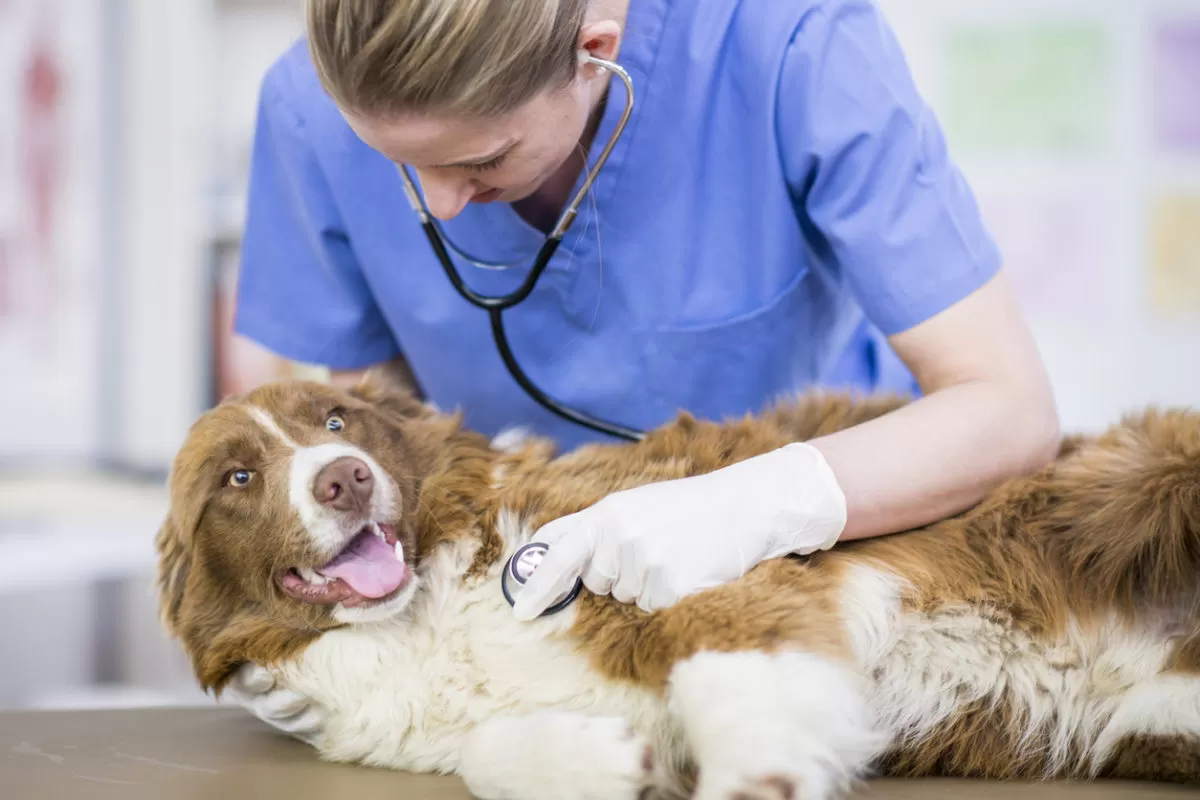
If you have a furry friend, you know how important it is to keep them happy and healthy. However, just like humans, dogs can also experience skin issues. One common problem is dry skin patches.
In this blog post, we will explore the causes, symptoms, and treatment options for dry skin patches on dogs. By understanding this condition, you’ll be better equipped to provide the care and medicine your canine companion needs.
Identifying Dry Skin Patches
Dry skin patches on dogs can manifest in various ways. Here are some signs to look out for:
- Flaky Skin: Dry patches on a dog’s skin can present themselves as small flakes or dandruff-like particles that are visible on the dog’s coat. These flakes are often dry and can be easily noticed, especially if your dog has a dark-colored coat. They may resemble tiny pieces of dry skin that have detached from the affected area.
- Itching and Scratching: Dogs with dry skin patches often experience intense itching and discomfort. The dryness and irritation can make them feel restless and lead to excessive scratching or licking of the affected areas. You may notice your dog constantly scratching or rubbing against furniture or carpets to relieve the itchiness. The constant scratching can further aggravate the dry patches, making them more uncomfortable for your dog.
- Redness and Inflammation: Dry skin can cause irritation and inflammation in dogs. The affected areas may appear reddened, and the skin may look irritated or inflamed. In some cases, the redness may be more pronounced in specific spots where the dry patches are more severe. The inflammation can contribute to the discomfort experienced by your dog, and the affected skin may feel warmer to the touch.
- Hair Loss: Prolonged scratching and biting at dry patches can result in hair loss in those areas. The continuous itching and irritation can cause the hair follicles to weaken, leading to hair breakage and loss. You may notice thinning hair or bald patches where your dog has been persistently scratching. The hair loss is often localized to the specific areas where the dry skin patches are present.
It’s important to note that if you observe these signs in your dog, it’s advisable to consult a veterinarian. They can provide a proper diagnosis and recommend appropriate treatment options to alleviate your dog’s discomfort and address the underlying cause of the dry skin patches.
Understanding the Causes
Now that you can recognize the symptoms, let’s delve into the possible causes of dry skin patches in dogs:
- Environmental Factors: Dry air, especially during winter or in regions with low humidity, can contribute to dry skin in dogs.
- Allergies: Dogs can be allergic to various substances, including certain foods, pollen, dust mites, or even fleas. Allergies can trigger dry skin patches.
- Nutritional Deficiencies: A diet lacking essential nutrients, such as omega-3 fatty acids and vitamins, can affect your dog’s skin health and lead to dry patches.
- Underlying Medical Conditions: Certain medical conditions, such as hypothyroidism, dermatitis, or autoimmune disorders, can cause dry skin in dogs.
Treating Dry Skin Patches
When it comes to treating dry skin patches on dogs, it is essential to address the root cause. Here are some approaches you can consider:
- Moisturizing Shampoos: Use gentle, moisturizing shampoos specifically formulated for dogs with dry skin. These shampoos can help hydrate and soothe the skin, reducing dry patches.
- Regular Brushing: Frequent brushing helps remove dead skin cells and distributes natural oils, promoting healthier skin.
- Dietary Changes: Consult your veterinarian to ensure your dog’s diet is well-balanced and contains adequate nutrients. Omega-3 fatty acid supplements may also help improve skin health.
- Environmental Modifications: If dry air is a contributing factor, consider using a humidifier in your home to increase moisture levels. Additionally, protect your dog from harsh weather conditions, such as cold winds or excessive sun exposure.
Seeking Professional Help
If your dog’s dry skin patches persist or worsen despite your efforts, it’s crucial to consult a veterinarian. A professional can conduct a thorough examination and recommend appropriate treatment options based on the underlying cause.
- Allergy Testing: If allergies are suspected, your veterinarian may suggest allergy testing to identify specific triggers. This information can guide you in implementing necessary dietary changes or environmental modifications.
- Medications: In some cases, your vet may prescribe topical creams, ointments, or oral medications to relieve itching, and inflammation, or address underlying medical conditions.
- Pet Compounded Medications: Compounded medications from specialized pharmacies can be beneficial for dogs with unique needs. These pharmacies can customize medications to suit your dog’s specific requirements, such as flavor preferences or allergies.
Prioritizing Your Dog’s Skin Health
Dry skin patches on dogs can be uncomfortable and bothersome for our four-legged friends. By paying attention to the signs and addressing the underlying causes, you can help alleviate their discomfort and promote healthier skin. Remember to consult your veterinarian for an accurate diagnosis and tailored treatment plan. With proper care and attention, your dog’s skin can be restored to its optimal condition, ensuring a happy and comfortable life for your beloved companion.
Conclusion
In conclusion, dry skin patches on dogs can stem from various causes, including environmental factors, allergies, nutritional deficiencies, or underlying medical conditions. By understanding the symptoms and addressing the root cause, you can take appropriate steps to alleviate your dog’s discomfort. Remember to prioritize your dog’s skin health and seek professional help with Burt’s Rx. With the right treatment and care, your furry friend can enjoy healthy, nourished skin once again.
Disclaimer: This article is meant for educational and entertainment purposes only. Do not substitute it for medical advice. Always listen to your doctor for the management of your condition.

 info@burtsrx.com
info@burtsrx.com
